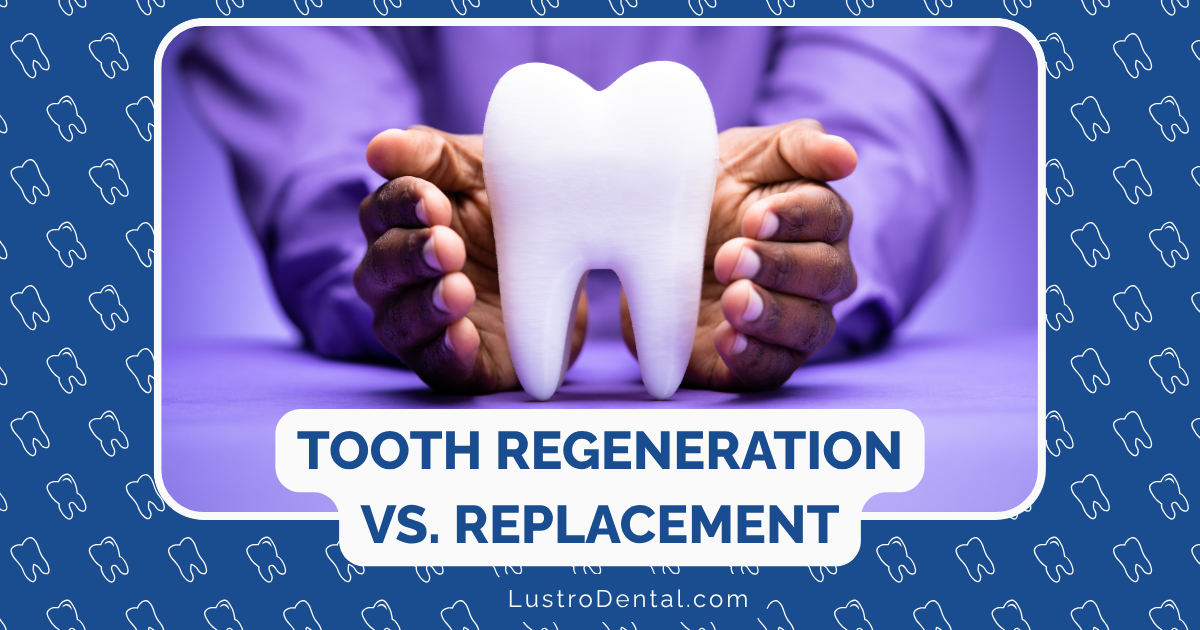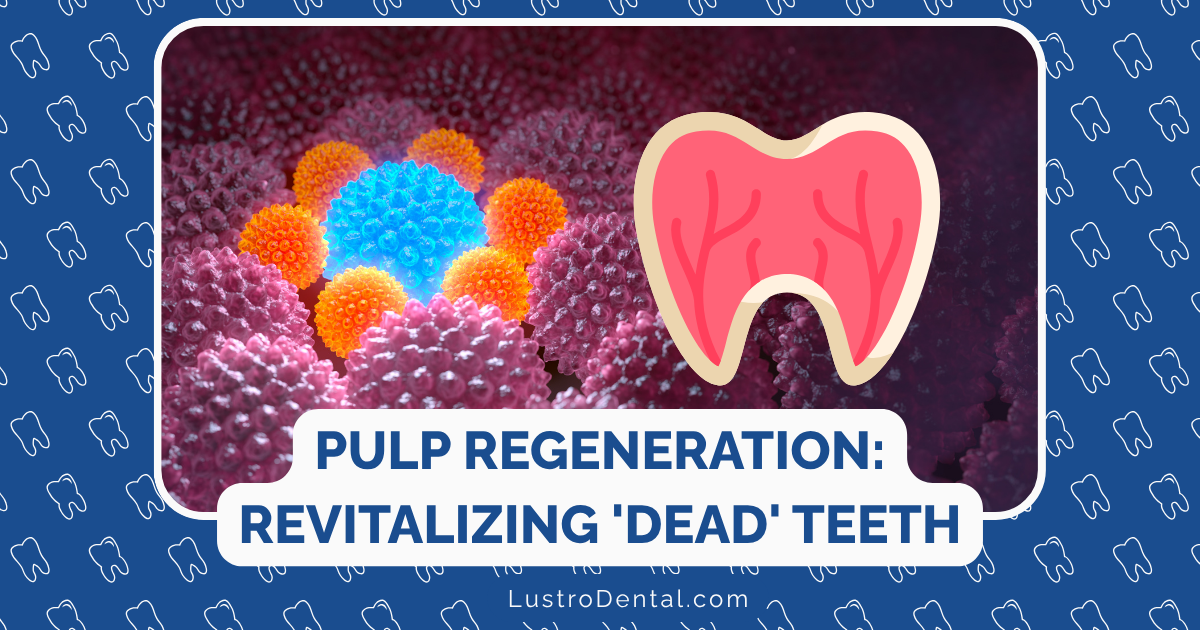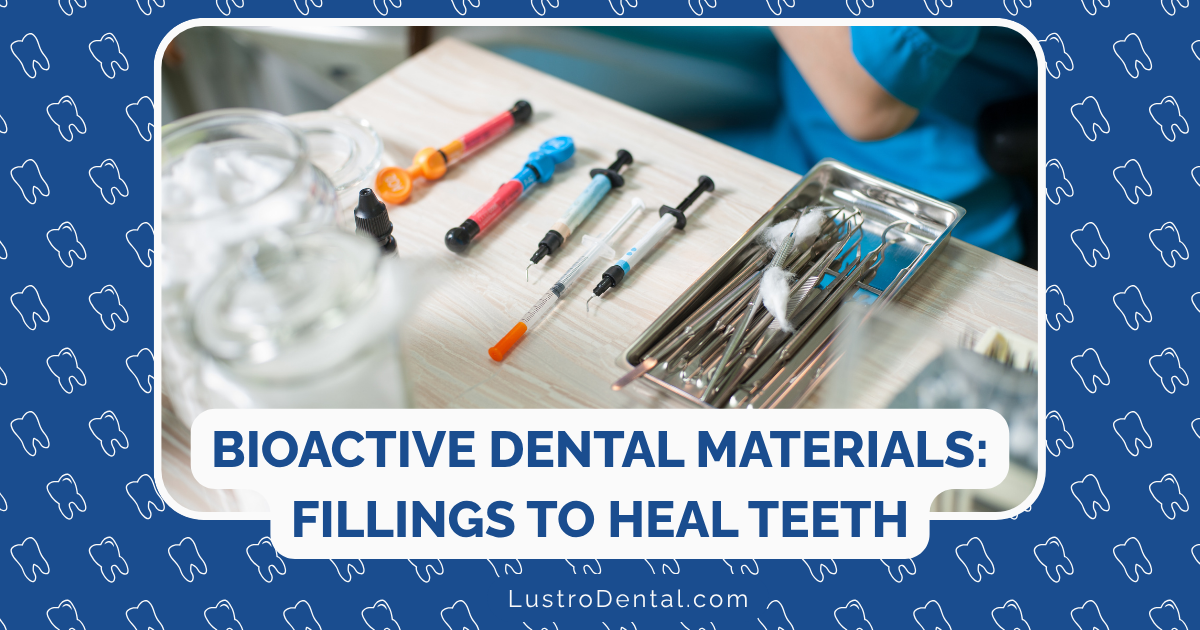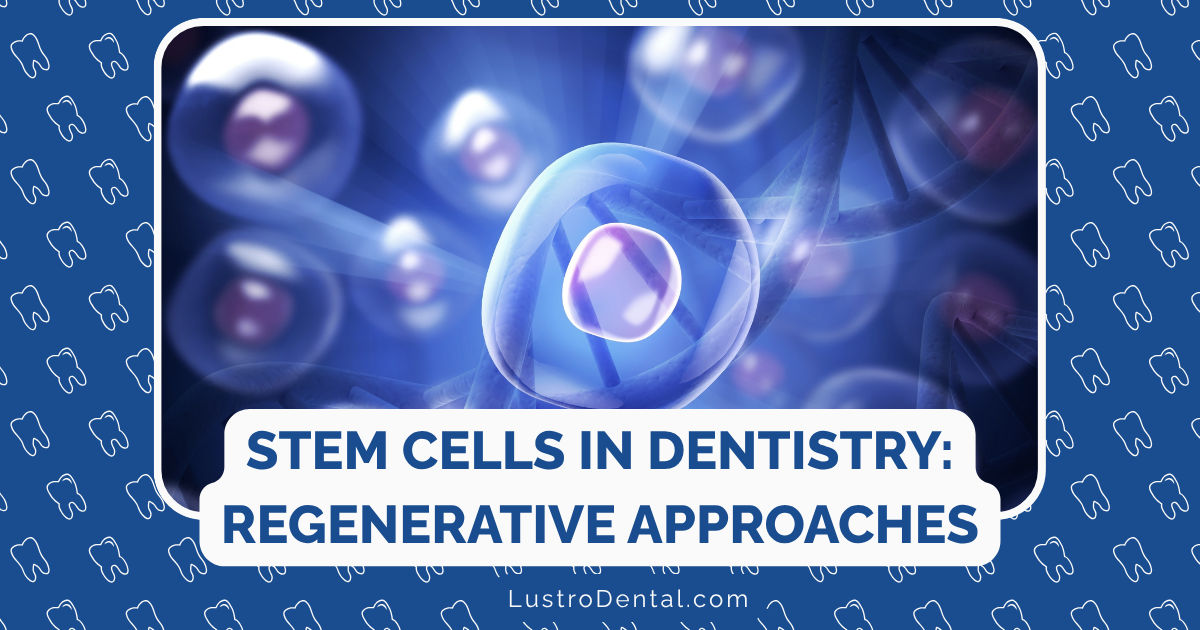Regrowing Dental Tissues: The Promise of Regenerative Endodontics
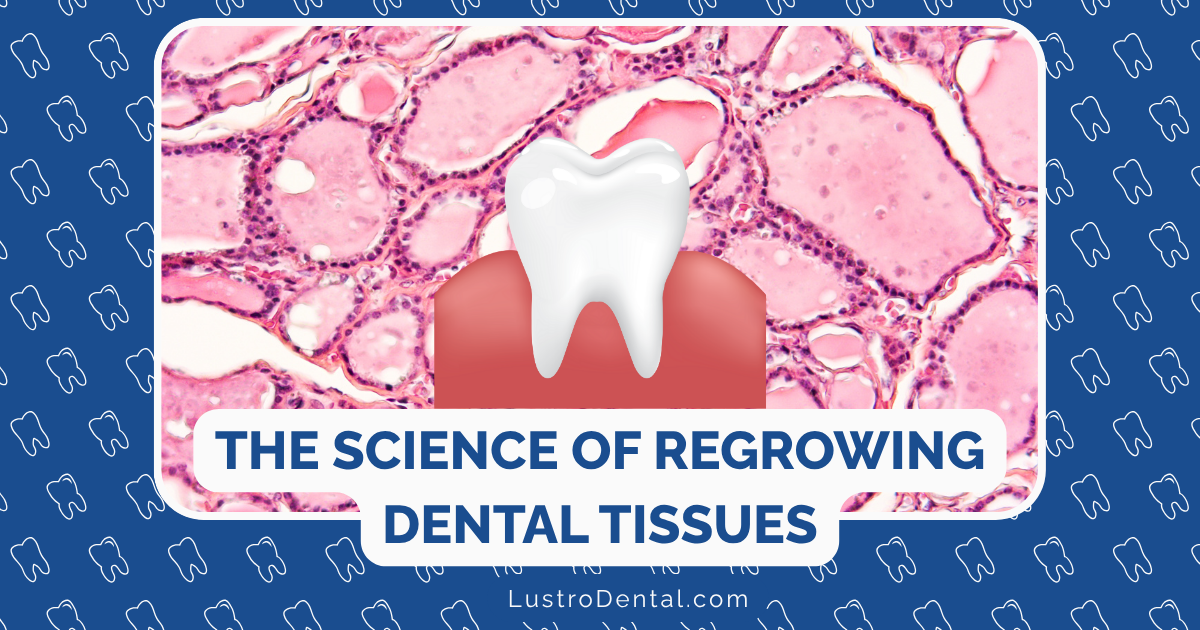
For decades, the standard approach to treating severely damaged or infected dental pulp has been root canal therapy—a procedure that, while effective at eliminating infection, leaves the tooth essentially “dead” by removing its vital inner tissues. This conventional treatment has served dentistry well, but it comes with limitations: treated teeth become more brittle over time, lack the ability to sense temperature or pressure, and in young patients with immature roots, may remain structurally compromised.
But what if there was another way? What if, instead of simply removing damaged tissue, we could actually regenerate it? This is the promise of regenerative endodontics—a revolutionary approach that aims to restore the vitality and functionality of damaged dental pulp and continue root development in immature teeth.
Understanding Regenerative Endodontics: A Paradigm Shift
Regenerative endodontics represents a fundamental shift in endodontic treatment philosophy—moving from a focus on tissue removal and replacement with synthetic materials to the biological regeneration of the pulp-dentin complex.
Dr. Sarah Johnson, Director of the American Association of Endodontists’ Regenerative Endodontics Committee, explains: “Traditional endodontics is about removing diseased tissue and filling the space. Regenerative endodontics is about harnessing the body’s natural healing capacity to restore living tissue. It’s the difference between replacing a part and healing an organ.”
The Biological Foundation
At its core, regenerative endodontics is built on three fundamental components of tissue engineering:
- Stem Cells: Undifferentiated cells capable of developing into specialized dental tissues.
- Scaffolds: Three-dimensional structures that support cell organization, proliferation, and differentiation.
- Signaling Molecules: Growth factors and other bioactive compounds that direct cell behavior and tissue development.
By manipulating these elements within the controlled environment of the root canal system, endodontists can create conditions conducive to tissue regeneration rather than simply filling the space with inert materials.
Current Clinical Applications: From Theory to Practice
While some aspects of regenerative endodontics remain in research phases, several applications have already transitioned to clinical practice:
Revitalization of Immature Permanent Teeth with Necrotic Pulps
The most established application of regenerative endodontics is the treatment of immature permanent teeth with pulp necrosis—a condition that traditionally presented significant challenges:
The Traditional Approach: Apexification
- Uses calcium hydroxide or mineral trioxide aggregate (MTA) to create an artificial barrier at the root end
- Stops root development, leaving thin, fragile root walls
- Results in a high risk of future fracture
The Regenerative Approach: Revitalization
- Disinfects the canal space with gentle irrigation and antibiotics
- Stimulates bleeding from the periapical tissues to form a scaffold
- Places a biocompatible material over the blood clot
- Allows for continued root development and strengthening
According to research published by the American Association of Endodontists, regenerative procedures result in approximately 15% increase in root length and 29% increase in root width compared to traditional apexification procedures—substantial improvements that significantly enhance the tooth’s long-term prognosis.
Dr. Michael Chen, an endodontist specializing in regenerative procedures, notes: “The difference in outcomes can be dramatic. With apexification, the root remains thin and fragile. With revitalization, we often see remarkable continued root development, with thickening of the walls and maturation of the apex. These teeth are much stronger and have a better long-term prognosis.”
Vital Pulp Therapy for Pulp Exposures
Another area where regenerative approaches are gaining traction is in the treatment of pulp exposures:
Traditional Approach: Complete Pulpectomy
- Removes the entire pulp, even when only part is affected
- Results in a non-vital tooth requiring full root canal treatment
Regenerative Approach: Partial Pulpotomy
- Removes only the affected portion of the pulp
- Places bioactive materials like MTA or biodentine directly on the remaining healthy pulp
- Preserves pulp vitality and function
- Allows for continued dentin formation and root development
A systematic review published in the Journal of Endodontics found success rates exceeding 90% for partial pulpotomy procedures using bioactive materials—comparable to conventional root canal therapy but with the significant advantage of maintaining pulp vitality.
Clinical Outcomes: What the Research Shows
The growing body of clinical evidence supports the efficacy of regenerative endodontic procedures:
Success Rates
According to a comprehensive analysis of 250 successful cases of regenerative endodontic treatment from 18 different studies published in Dental and Medical Problems:
- 96% of successful cases showed healing or absence of periapical lesions
- 45% demonstrated significant root development maturation
- Success was observed in follow-up periods ranging from 2 months to 8 years
The American Association of Endodontists reports overall success and survival rates ranging from 90-100% for regenerative endodontic procedures.
Factors Influencing Success
Several key factors have been identified as critical for successful outcomes:
- Patient Age: Better outcomes are observed in younger patients (ages 9-13) with greater stem cell populations and growth potential.
- Apical Diameter: A clinical success rate of 95.65% has been reported in teeth with apical diameters of 0.5 to 1.0 mm, with an open apical foramen wider than 1.1 mm being particularly favorable for revascularization.
- Disinfection Protocol: Adequate disinfection is crucial, with studies showing that insufficient disinfection can account for approximately 14% of failures.
- Etiology: The cause of pulp necrosis influences outcomes, with dental trauma (49%), dental caries (24%), and dens evaginatus (23%) being the most common etiologies in successful cases.
Dr. Lisa Rodriguez, who has conducted clinical research on regenerative endodontics, emphasizes: “Case selection is critical. The ideal candidate is a younger patient with an immature tooth that has a wide-open apex, minimal root wall destruction, and good overall health. As our techniques improve, we’re seeing success in a broader range of cases, but these factors remain important predictors of outcome.”
The Regenerative Procedure: What Patients Can Expect
For patients considering regenerative endodontic treatment, understanding the procedure can help set appropriate expectations:
Typical Protocol for Immature Teeth with Necrotic Pulp
First Appointment:
- Local anesthesia administration
- Rubber dam isolation for a sterile field
- Access opening to the pulp chamber
- Gentle irrigation with 1.5% sodium hypochlorite (much lower concentration than in conventional root canal therapy)
- Drying of the canal
- Placement of an antibiotic paste (typically a diluted mixture of ciprofloxacin, metronidazole, and minocycline or alternative antibiotics)
- Temporary filling placement
Second Appointment (2-4 weeks later):
- Assessment of symptoms and infection resolution
- Local anesthesia without epinephrine (to allow bleeding)
- Removal of temporary filling and antibiotic paste
- Final irrigation with EDTA to release growth factors from dentin
- Drying of the canal
- Stimulation of bleeding by extending a sterile instrument beyond the apex
- Formation of a blood clot at the level of the cementoenamel junction
- Placement of a collagen membrane over the blood clot (in some cases)
- Placement of MTA or Biodentine over the blood clot
- Final restoration with composite resin
Follow-up:
- Regular clinical and radiographic assessments (typically at 3, 6, 12 months, and then annually)
- Monitoring for continued root development, resolution of symptoms, and periapical healing
James, a 12-year-old patient who underwent regenerative endodontic treatment for a necrotic immature premolar following trauma, shares his experience: “I was nervous at first, but it wasn’t much different from getting a filling. I had two appointments, and after the second one, I just had regular check-ups. Three years later, my dentist says the tooth is doing great—the root has grown more, and the tooth feels normal.”
Beyond Current Applications: The Future of Regenerative Endodontics
While current regenerative endodontic procedures primarily rely on the patient’s own stem cells recruited from periapical tissues, research is advancing rapidly toward more sophisticated approaches:
Cell-Based Approaches
The next generation of regenerative endodontics involves the direct transplantation of stem cells into the root canal space:
- Dental Pulp Stem Cells (DPSCs): Harvested from extracted teeth and expanded in the laboratory
- Stem Cells from Human Exfoliated Deciduous Teeth (SHED): Obtained from naturally shed primary teeth
- Bone Marrow-Derived Mesenchymal Stem Cells (BMMSCs): Collected from bone marrow and directed toward pulp-like tissue formation
A recent systematic review published in Science Direct analyzed various stem cell-based approaches and found promising results across multiple studies, particularly with dental pulp stem cells and umbilical cord mesenchymal stem cells for pulpal regeneration.
The American Association of Endodontists Foundation has invested $2.5 million in research grants to investigate stem cell regeneration in endodontics, including a study on “Cell Based Approaches to Endodontic Regeneration” that aims to test whether autologous dental pulp stem cell transplantation can regenerate the pulp-dentin complex in teeth with necrotic pulp.
Advanced Scaffolds
Beyond the simple blood clot currently used in clinical procedures, researchers are developing sophisticated scaffolds:
- Injectable Hydrogels: Can be delivered minimally invasively and conform to the canal space
- 3D-Printed Scaffolds: Custom-designed to match the exact dimensions of the canal
- Bioactive Scaffolds: Incorporate growth factors and signaling molecules to direct cell behavior
- Nanofibrous Scaffolds: Mimic the natural extracellular matrix of pulp tissue
Pulp Regeneration in Mature Teeth
Perhaps most exciting is the emerging evidence that regenerative approaches may be applicable to fully developed teeth with closed apices—a population far larger than immature teeth:
- Research published by the American Association of Endodontists has identified inflamed periapical tissues as a significant source of mesenchymal stem cells in adult patients with mature teeth.
- Clinical trials have demonstrated that evoking bleeding from periapical tissues leads to a significant influx of MSCs into the root canal systems of mature teeth, comparable to that observed in immature teeth.
- Case reports have shown successful resolution of signs and symptoms of pulp necrosis in mature teeth with large periapical lesions following regenerative procedures.
Dr. Robert Thompson, a researcher in regenerative endodontics, explains: “The application of regenerative procedures to mature teeth would revolutionize endodontics. While we’re still in early stages, the preliminary results are encouraging. The key challenges are creating sufficient space for new tissue growth and ensuring adequate blood supply through the narrow apical foramen.”
Challenges and Limitations
Despite the promising results, several challenges must be addressed before regenerative endodontics can fully replace conventional endodontic therapy:
Clinical Challenges
- Predictability: Success rates vary widely, with some studies reporting failure rates up to 40% according to research published in Wiley Online Library.
- Tissue Quality: Histological studies indicate that the regenerated tissue often differs from true pulp tissue, consisting instead of ectopic bone, cementum, and fibrous connective tissue.
- Disinfection Balance: Achieving sufficient disinfection without damaging stem cells and growth factors remains challenging.
- Case Selection: Current procedures are limited primarily to immature teeth with open apices and minimal root wall destruction.
Practical Considerations
- Treatment Time: Regenerative procedures typically require multiple appointments spread over several weeks, compared to one or two appointments for conventional root canal therapy.
- Cost: Advanced regenerative techniques may involve higher costs due to specialized materials and additional appointments.
- Technique Sensitivity: The procedures require precise execution and are less standardized than conventional endodontics.
The Patient Perspective: Is Regenerative Endodontics Right for You?
For patients considering treatment options, several factors should be considered:
Ideal Candidates
Regenerative endodontic procedures are currently most appropriate for:
- Children and adolescents with immature permanent teeth (incomplete root formation)
- Teeth with pulp necrosis due to trauma, caries, or developmental anomalies
- Patients in good overall health with good compliance
- Cases where conventional treatment would leave the tooth structurally compromised
Questions to Ask Your Endodontist
If you’re considering regenerative endodontic treatment, consider asking:
- Am I (or is my child) a good candidate for regenerative endodontics?
- What are the specific benefits in my case compared to conventional treatment?
- What is the expected success rate for my specific situation?
- How many similar cases have you treated, and what outcomes have you observed?
- What follow-up will be required, and for how long?
- What signs would indicate that the treatment is or isn’t working?
Making an Informed Decision
Dr. Emily Martinez, who specializes in pediatric endodontics, advises: “Regenerative endodontics offers tremendous benefits for the right cases, particularly in young patients with immature teeth. However, it’s not a universal solution. The decision should be made collaboratively between the patient, parents if applicable, and the endodontist, considering the specific circumstances of each case.”
Conclusion: A Promising Frontier in Dental Care
Regenerative endodontics represents one of the most exciting frontiers in dental medicine—a shift from simply managing disease to actually regenerating healthy tissue. While current clinical applications are primarily focused on immature teeth with necrotic pulps, ongoing research continues to expand the possibilities, potentially transforming how we approach pulpal disease across all age groups.
The American Association of Endodontists has recognized the significance of this field by investing millions in research, incorporating regenerative endodontics into endodontic specialty program requirements, and developing clinical guidelines to standardize procedures.
As the field continues to evolve, patients can expect more predictable outcomes, broader applications, and potentially the ability to restore vitality to teeth that would otherwise remain devitalized after conventional treatment. This progress not only advances the technical aspects of dental care but also aligns with the fundamental goal of preserving natural dentition in its most functional state.
For patients facing endodontic treatment, particularly children and adolescents with immature teeth, discussing regenerative options with an endodontist may open the door to treatments that not only address immediate concerns but set the stage for better long-term outcomes and dental health.
Have you or your child experienced regenerative endodontic treatment? We’d love to hear about your experience in the comments below!


